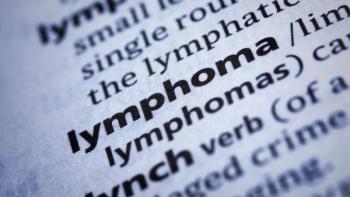
- Winter 2008
- Volume 7
- Issue 5
Another Inconvenient Truth
What I didn't know then about childhood cancer.
For two years, my right shoulder really ached. It came from throwing thousands of footballs to my 14-year-old son, Alex John, or as we called him, A.J.
Trying to lead him just right on deep post patterns, trying hard to keep up with his speed. And, after the last one every time—you see, he would only let it end after he made a great catch—he came running and jumped into my arms, yelling, “The Bills win the Super Bowl! The Bills win the Super Bowl!” Just us dreaming.
The shoulder pain also came from me trying to pitch to him as fast as I could, but he always got a hit off me anyway. It honestly hurt bad enough that I only slept on my left side, and if I rolled over on it, it would wake me up in the night. But I didn’t care, how could I stop doing those things? I loved it.
My new problem is that my shoulder has slowly but surely stopped aching. Now what keeps me awake at night is my broken heart. You see, I have no one to throw those passes to, no one to brush back anymore, because A.J. left us on January 5, 2008, a victim of childhood cancer.
A.J. truly was a remarkable young man. He was born during a blizzard in March 1993, and to this day I remember him not crying or breathing right after being born, and the doctor and nurses rushing around in the delivery room. But after he took that first breath, boy, did he breathe deep the rest of his life.
He lived life. He was always smiling. He loved sports, people, music, playing the guitar, animals, movies, good books. He had fun. He always made people laugh, did the right thing, did everything at 110 percent, and was simply a joy to be around. He was the love of our lives. During the last couple months, as we would be alone in the hospital room together at night and talk, and then finally at home, I came to know that, believe it or not, this 14-year-old was truly the most evolved person I have ever known.
The reality is that A.J. is just one of 12,500 kids every year diagnosed with cancer. I know that the average American parent does not know this. They don’t know that our children have a one in 300 chance of being diagnosed with cancer by the age of 20, according to the nonprofit CureSearch, a partnership between the National Childhood Cancer Foundation and Children’s Oncology Group. They don’t know that every year 2,500 children lose their lives to childhood cancer. They don’t know that cancer is the No. 1 disease killer of our children—more than from asthma, diabetes, cystic fibrosis, and pediatric AIDS combined. They don’t know that funding and research are desperately needed for childhood cancer because the current treatments can lead to long-term organ damage, developmental problems, and secondary cancers. They don’t know that it doesn’t make business sense for pharmaceutical companies to research new drugs because childhood cancer is considered “rare” compared with adult cancers.
You see, “rare” really has two meanings: happening to you or to someone else. Before A.J. was diagnosed on Father’s Day in 2007 I never knew any of these horrible statistics either. But I do now. Just like 25,000 other parents this year.
So I have a mission. To raise awareness of the impact this terrible disease has on our children. I know that once awareness reaches a tipping point, funding will follow. And hopefully some day soon, no other father will have to answer the question, “Dad, what’s hospice?”
--Bob Piniewski recently started
Articles in this issue
about 17 years ago
Message from the Editorabout 17 years ago
Letters from Our Readersabout 17 years ago
An Update From Friendsabout 17 years ago
New Law Protects College Students' Health Insuranceabout 17 years ago
Newman Passes, Cancer Aid Goes Globalabout 17 years ago
9th Annual Conference for Young Women Affected by Breast Cancerabout 17 years ago
YMCA and LAF Develop Exercise Programsabout 17 years ago
Q&A: CT Colonographyabout 17 years ago
Finasteride Comes Out on Top in Prostate Cancer Trialabout 17 years ago
Crazy Sexy Cancer Survivor



